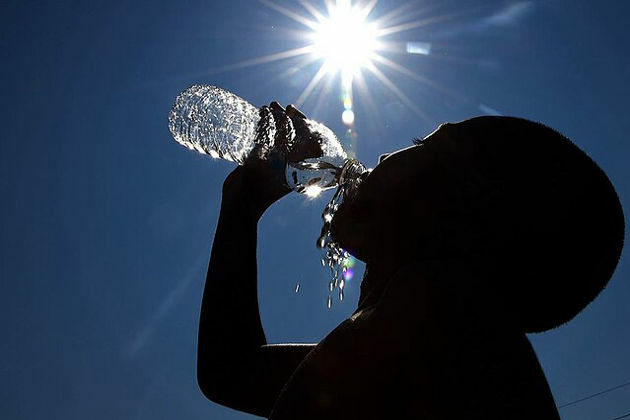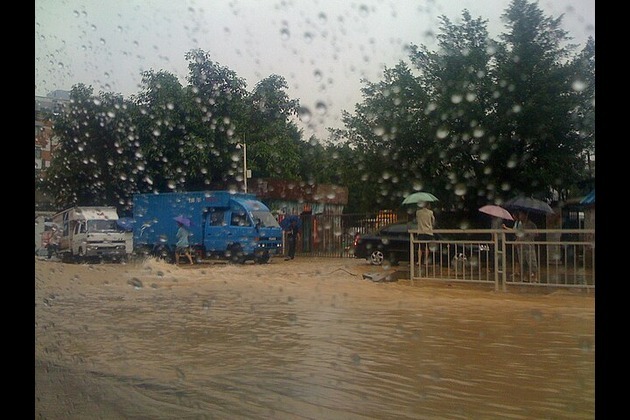The drought in southern Australia is not over - it just looks that way
The Conversation
26 Jun 2025, 20:07 GMT+10

How often do you mow your lawn in winter? That may seem like an odd way to start a conversation about drought. But the answer helps explain why our current drought has not broken, despite recent rain - and why spring lamb may be more expensive this year.
Southern Australia has been short of rain for 16 months. Western Victoria, the agricultural regions of South Australia (including Adelaide) and even parts of western Tasmania are suffering record dry conditions. Those rainfall measurements began in 1900 (126 years ago).
Fewer and less intense rain-bearing weather systems have been crossing the southern coastline since February 2024, compared to normal. Put simply, the land has not received enough big dumps of rain.
But June has finally brought rain to some drought-affected regions. There's even an emerald green tinge to the fields in certain agricultural areas. But it's now too cold for plants to really grow fast, meaning farmers will be carting hay and buying extra feed for livestock until the weather warms in spring.
This month, some areas received good rainfall - including places near Melbourne and, to a lesser degree, Adelaide. City people may be forgiven for thinking the drought has broken and farmers are rejoicing. But drought is not that simple.
Unfortunately, the rainfall was inconsistent, especially further inland. The coastal deluge in parts of southern Australia in early June didn't extend far north. Traditionally, the start of the winter crop-growing season is marked by 25mm of rain over three days - a so-called "autumn break". But many areas didn't receive the break this year.
The lack of rain (meteorological drought) compounded the lack of water in the soil for crops and pasture (agricultural drought). Parts of Western Australia, SA, Victoria, Tasmania and southern New South Wales had little moisture left in their soils. So some rain is quickly soaked up as it drains into deeper soils.
To make matters worse, autumn was the warmest on record for southern Australia, following its second-warmest summer on record. This can increase the "thirst" of the atmosphere, meaning any water on the surface is more likely to evaporate. Recent thirsty droughts, such as the 2017-19 Tinderbox Drought in NSW, were particularly hard-hitting.
Some areas may have experienced "flash drought", which is when the landscape and vegetation dry up far quicker than you would expect from the lack of rain alone. By May, areas of significantly elevated evaporative stress were present in southeastern SA, Victoria, southern NSW and northern Tasmania.
In late May and early June, and again this week, there have been winter dust storms in SA. Such dust storms are a bad sign of how dry the ground has become.
Some regions no longer have enough water to fill rivers and dams (hydrological drought). Water restrictions have been introduced in parts of southwest Victoria and Tasmania. The bureau's streamflow forecast does not look promising.
Remember that lawn mowing analogy? The winter chill has already set in across the south. This means it's simply too cold for any vigorous new grass growth, and why you are not mowing your lawn very often at the moment.
Cool temperatures, rather than just low rainfall, also limit pasture growth. While from a distance the rain has added an emerald sheen to some of the landscape, it's often just a green tinge. Up close, it's clear there is very limited new growth.
Rather than abundant and vigorous new shoots, there's just a little bit of green returning to surviving grasses. This means there's very limited feed for livestock. To make matters worse, sometimes the green comes from better-adapted winter weeds.
There will be a lot of hay carting, regardless of rainfall, until spring when the soils start to warm up once again and new growth returns. This all adds up to fewer stock kept in paddocks or a big extra cost in time and money for farmers - and ultimately, a more expensive spring lamb barbecue.
Southern Australia (southern WA, SA, Tasmania, Victoria and southern NSW) used to experience almost weekly rain events in autumn and early winter. Cold fronts and deep low-pressure systems rolling in from the west brought the bulk of the rainfall.
Now there is a far more sporadic pattern in these regions. Rainfall in the April to October crop and pasture growing season has declined by around 10-20% since the middle of last century. The strongest drying trend is evident during the crucial months between April and July.
Further reductions in southern growing season rainfall are expected by the end of this century, especially in southwestern Australia. Southeastern regions, including southern Victoria, parts of SA and northern Tasmania, also show a consistent drying trend, with a greater time spent in drought every decade.
Drought is complex. Just because it's raining doesn't always mean it has rained enough, or at the right time, or in the right place. To make matters worse, a green drought can even deceive us into thinking everything is fine.
Breaking the meteorological drought will require consistent rainfall over several months. Breaking the agricultural drought will also require more warmth in the soils. Outlooks suggest we may have to wait for spring.
This article includes scientific contributions from David Jones and Pandora Hope from the Australian Bureau of Meteorology.
Read more: Why is southern Australia in drought - and when will it end?
 Share
Share
 Tweet
Tweet
 Share
Share
 Flip
Flip
 Email
Email
Watch latest videos
Subscribe and Follow
Get a daily dose of Australian Herald news through our daily email, its complimentary and keeps you fully up to date with world and business news as well.
News RELEASES
Publish news of your business, community or sports group, personnel appointments, major event and more by submitting a news release to Australian Herald.
More InformationInternational
SectionAlliance eyes major military buildup to counter Russia
THE HAGUE, Netherlands: NATO is pressing ahead with a sweeping new defense spending target, calling on all 32 member nations to commit...
Mamdani leads NYC mayoral race in stunning upset over Cuomo
NEW YORK, U.S.: A political newcomer is on the verge of reshaping New York City politics. Zohran Mamdani, a 33-year-old state assemblyman...
Millions endure dangerous US temperatures, heat alert issued
MADISON, Wisconsin: Tens of millions of residents across the Midwest and East Coast faced dangerously high temperatures over the weekend...
Multiple Israeli troops die as armored personnel carrier is blown up in Gaza
KHAN YOUNIS, Gaza - Seven Israeli soldiers were killed in a large explosion in southern Gaza's Khan Younis area on Tuesday night,...
Khamenei remains in hiding as clerics fast-track succession plans
DUBAI, U.A.E.: Iran's top clerics are quietly accelerating succession plans for Supreme Leader Ayatollah Ali Khamenei, who was threatened...
Monsoon floods batter China, raising climate concerns
BEIJING, China: Extreme weather is once again testing China's resilience, as intensifying monsoon rains trigger floods across major...
Sydney
Section"Australia had ruined our...": Rohit Sharma on iconic T20 WC 2024 win against 50-over champions
Mumbai (Maharashtra) [India], June 27 (ANI): India ODI skipper Rohit Sharma opened up and shared his thoughts on the rivalry between...
From the "ideal T20 ball" to "game-changer knock", Rohit opens up on T20 WC 2024 win
Mumbai (Maharashtra) [India], June 26 (ANI): India's T20 World Cup winning skipper Rohit Sharma capturing the short format's biggest...
The drought in southern Australia is not over - it just looks that way
How often do you mow your lawn in winter? That may seem like an odd way to start a conversation about drought. But the answer helps...
New documentary on life of singer-actress Olivia Newton-John announced
Washington DC [US], June 26 (ANI): Singer and actress Olivia Newton-John fans will get to witness the challenges she faced in her career...
Revival of Ancient Kerala Heritage: Prana Pratishtha Ceremony Marks the Reawakening of the Pathirisseri Kuladevata Temple
cliQ India Media Pvt Ltd Pathirisseri (Kerala) [India], June 26: In a momentous revival of ancient spiritual heritage, the Prana...
Public tickets exhausted for SCG ODI and Manuka T20I for Australia vs India matches
Sydney [Australia], June 26 (ANI): The Australia vs India white ball series in October/November has generated immense excitement among...












